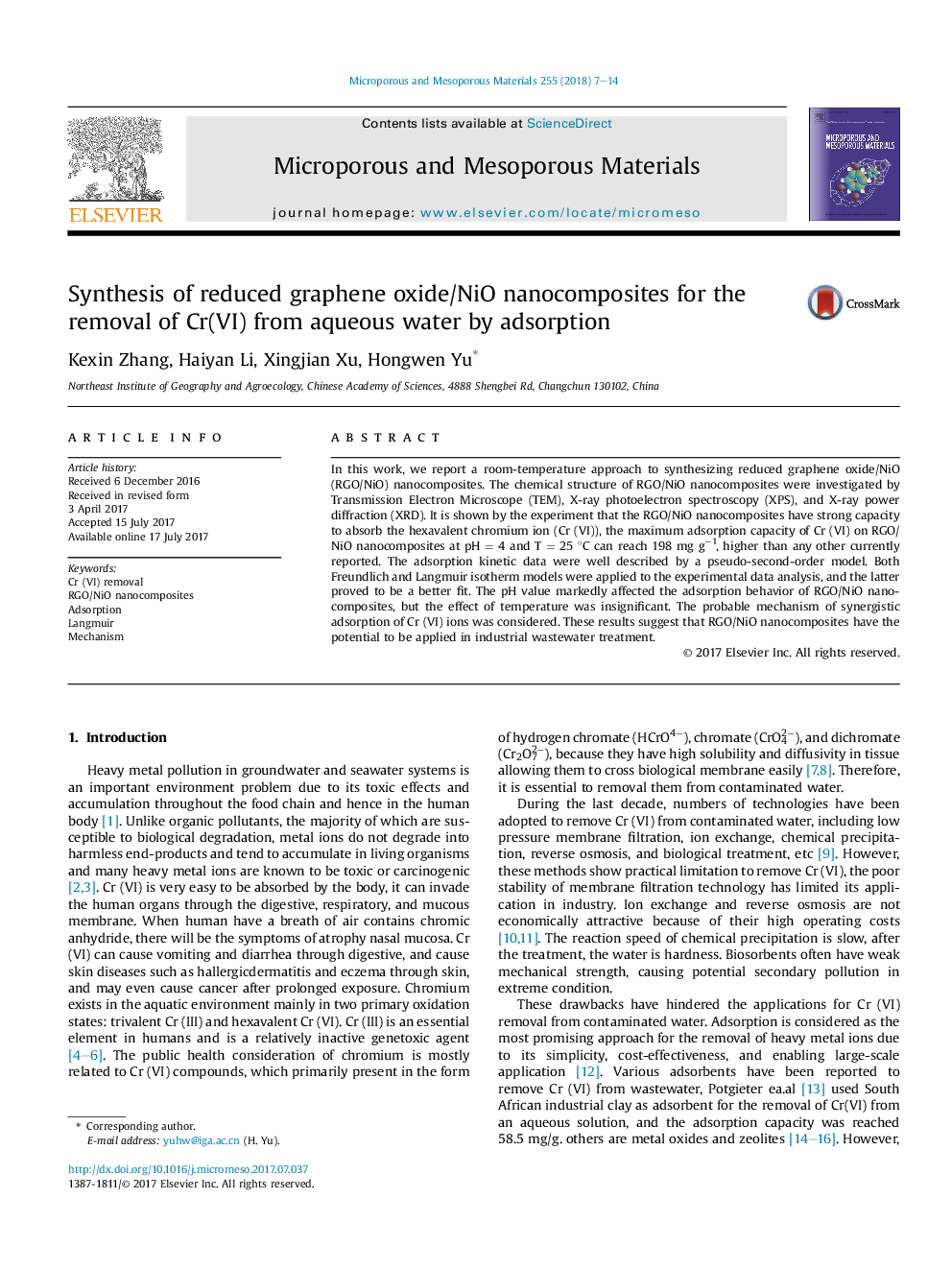| Article ID | Journal | Published Year | Pages | File Type |
|---|---|---|---|---|
| 4758106 | Microporous and Mesoporous Materials | 2018 | 8 Pages |
â¢The maximum adsorption capacity of Cr(VI) is 198 mg/g.â¢The effect of temperature was insignificant.â¢Acidic condition (pH 3-5) are favored for Cr (VI) adsorption.â¢The optimal adsorption capacity of RGO/NiO nanocomposites could be reached when the GO amount was 20 wt%.
In this work, we report a room-temperature approach to synthesizing reduced graphene oxide/NiO (RGO/NiO) nanocomposites. The chemical structure of RGO/NiO nanocomposites were investigated by Transmission Electron Microscope (TEM), X-ray photoelectron spectroscopy (XPS), and X-ray power diffraction (XRD). It is shown by the experiment that the RGO/NiO nanocomposites have strong capacity to absorb the hexavalent chromium ion (Cr (VI)), the maximum adsorption capacity of Cr (VI) on RGO/NiO nanocomposites at pH = 4 and T = 25 °C can reach 198 mg gâ1, higher than any other currently reported. The adsorption kinetic data were well described by a pseudo-second-order model. Both Freundlich and Langmuir isotherm models were applied to the experimental data analysis, and the latter proved to be a better fit. The pH value markedly affected the adsorption behavior of RGO/NiO nanocomposites, but the effect of temperature was insignificant. The probable mechanism of synergistic adsorption of Cr (VI) ions was considered. These results suggest that RGO/NiO nanocomposites have the potential to be applied in industrial wastewater treatment.
Graphical abstractDownload high-res image (588KB)Download full-size image
